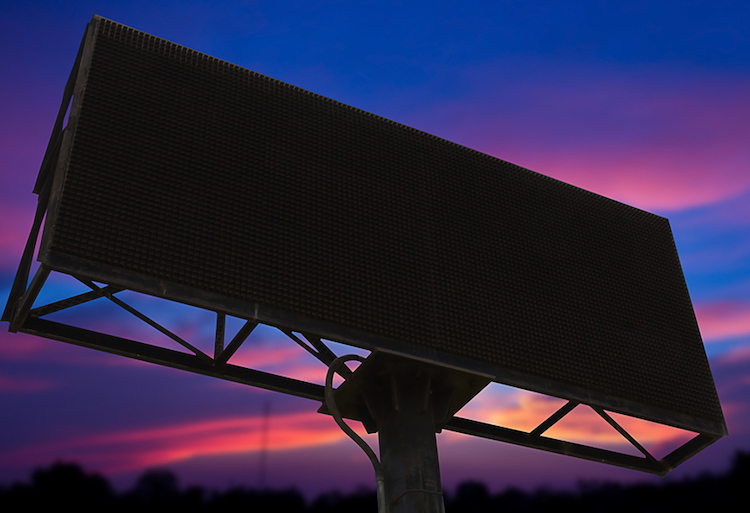Supreme Court will decide whether ban on some digital billboards violates First Amendment

Image from Shutterstock.
The U.S. Supreme Court on Monday agreed to decide whether Austin, Texas, violated the First Amendment when it allowed digital billboards on properties of businesses but not elsewhere.
At issue is whether the distinction between on-site and off-site digital billboards is an impermissible content-based regulation, according to Austin’s cert petition in the case, City of Austin, Texas v. Reagan National Advertising of Texas Inc.
The 5th U.S. Circuit Court of Appeals at New Orleans had ruled that the sign restriction violated the First Amendment under the 2015 Supreme Court case, Reed v. Town of Gilbert.
Reed involved a sign ordinance that imposed restrictions on “temporary directional signs” directing the public to meetings of churches and other nonprofit groups. The high court ruled in Reed that the ordinance was an impermissible content-based restriction on speech.
Reagan National Advertising of Texas and the Lamar Advantage Outdoor Co. seek to uphold the 5th Circuit decision. They argue that Austin’s restrictions were content-based because they banned signs advertising a business, activity, goods or services that were not located on the site where the message appeared.
“For example, a sign on church property inviting people to attend that church was allowed,” the companies argued. “But the same sign structure, in the very same place, was prohibited from inviting people to attend services at another church.”
Reagan National Advertising of Texas wanted to convert 61 of its billboards to a digital face, while Lamar wanted to convert 23 billboards. Austin denied the permit applications.
Austin argued that its sign restriction was based on location and technology, not content.
Courthouse News Service and Law360 have coverage of the cert grant. The SCOTUSblog case page is here.
Write a letter to the editor, share a story tip or update, or report an error.


